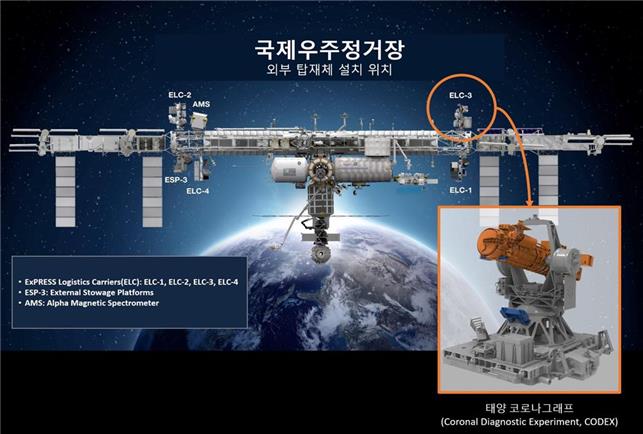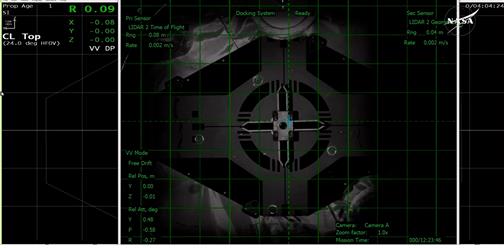
This image provided by the Korea AeroSpace Administration shows the Coronal Diagnostic Experiment, co-developed by the Korea Astronomy & Space Science Institute and the U.S. National Aeronautics and Space Administration, and the location at the ISS where the coronagraph will be installed. (Yonhap)
SEOUL, Nov. 6 (Korea Bizwire) – A solar coronagraph jointly developed by South Korea and the United States has successfully docked at the International Space Station (ISS) to carry out its mission of observing the sun and its outer atmosphere, or corona, Seoul’s national space agency said Wednesday.
A vessel carrying the Coronal Diagnostic Experiment (CODEX), a collaboration between the Korea Astronomy & Space Science Institute and the U.S. National Aeronautics and Space Administration (NASA), docked to the space station at 11:52 p.m. on Tuesday, about 12 hours after it was launched aboard Space X’s Falcon 9 rocket from the Kennedy Space Center in Florida, according to the Korea AeroSpace Administration (KASA).
The coronagraph will be installed at one of the ISS’ Express Logistics Carriers using NASA’s robot arm over the weekend to observe the sun and its corona for up to 55 minutes per 90-minute Earth orbit for up to two years.
CODEX is the world’s first coronagraph designed to observe the temperature and velocity of the solar wind in addition to the density, and produce two-dimensional video footage of the observation, KASA said, noting it will help researchers better understand the solar wind and predict space weather.
The solar wind is a constant stream of particles and magnetic fields released from the sun’s outermost atmospheric layer that affects the weather in space.

This image provided by the Korea AeroSpace Administration shows the vessel carrying the Coronal Diagnostic Experiment, co-developed by the Korea Astronomy & Space Science Institute and the U.S. National Aeronautics and Space Administration, docking at the International Space Station on Nov. 5, 2024. (Yonhap)
CODEX will be given two main tasks: understanding what heats the solar wind to temperatures millions of degrees hotter than the sun’s surface and testing models that show this heating and accelerating region.
“The successful launch of CODEX, a next-generation coronagraph, will bring an important development in the space weather forecast and related studies,” said Kang Hyun-woo, the head of the space science exploration program at KASA.
(Yonhap)





